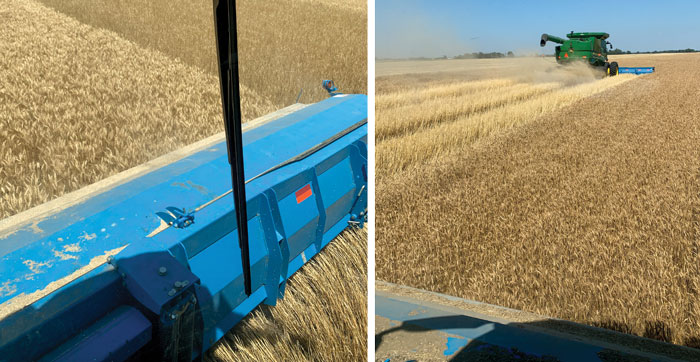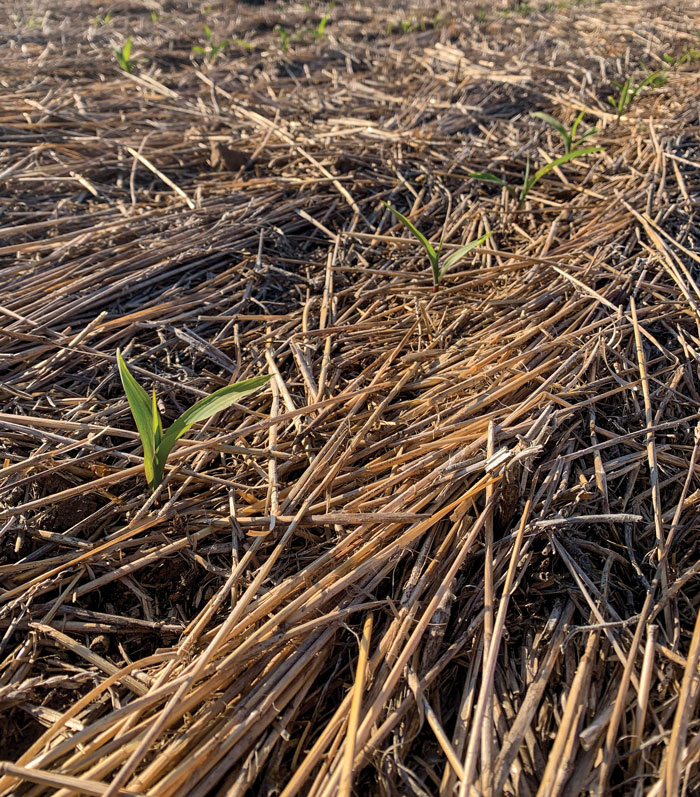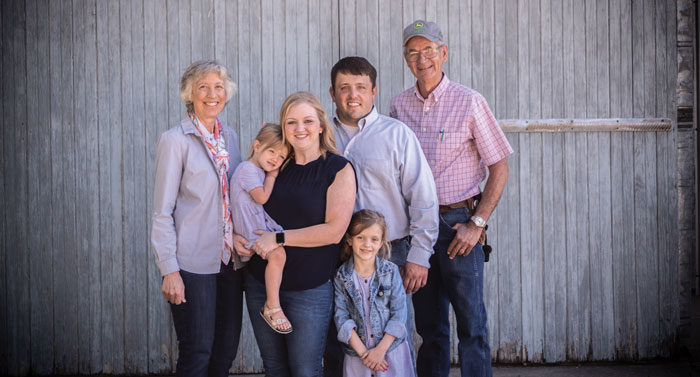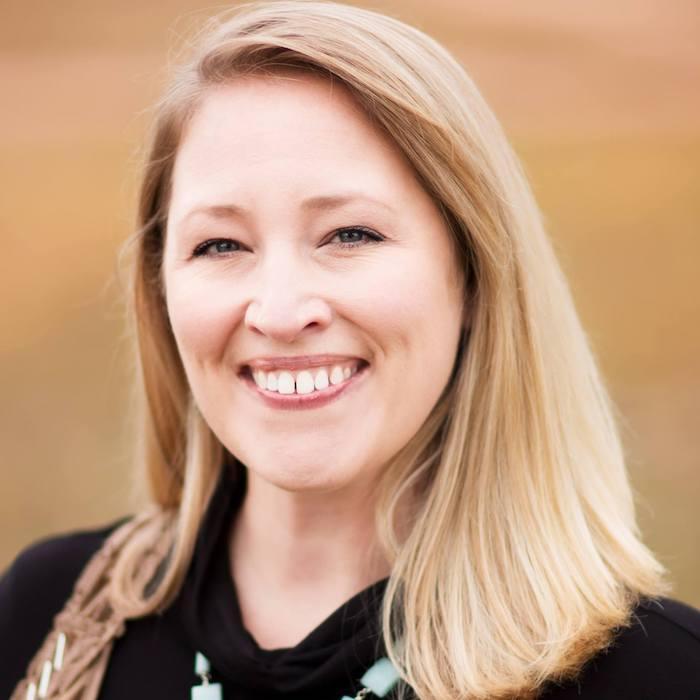It started with one simple question asked to no-tiller Lee Scheufler at a winter meeting: “Why do you plant soybeans with an airseeder on 7½-inch rows?” A farmer icebreaker if there ever was one.
The question did more than break the ice. It started a years-long (and still going) dialog that opened flood gates, built bridges, and lifted our family out of a dark time.
When I asked the question, I was at my worst. I had been kicking the world’s tail, growing my own farm and custom farming operation, growing good crops, and cashing in on strong markets. Then, in 2016, there was a price correction in the wheat market. All of a sudden, we were broke. Broken financially, broken of confidence, and nearly broken in spirit.
It was at this point I was ready to listen to others’ ideas, be open to different ways of doing things. It took almost losing the farm to be able to sit down and listen to someone else — I’m terrible at both. But I’ve learned you should always be asking questions and always listening — and not just at the lowest point of your business or life, but the whole time.
Check The Specs...
NAME: Matt Splitter
LOCATION: Sterling, Kan.
FARM NAME: Splitter Farms
ACRES: 8,000+
YEARS NO-TILLING: 6
CROPS: Winter wheat, grain sorghum, soybeans and corn
ANNUAL PRECIPITATION: 28-30 inches
PRIMARY SOIL TYPE: Silty-clay-loam to sugar sand
IRRIGATION: Yes, 20%
LIVESTOCK: No
While our first conversation was short, Lee saw my curiosity and asked if my wife, Janna, and I wanted to come over and visit with him and his wife, Margaret. The Scheufler’s were in our community, but far enough away that we hadn’t really interacted. I knew they were progressive and that the way they were farming — no-till — was the way I thought I should be farming, though I wasn’t. They had been fully no-till since the 1990s and had no fallow. It was such a drastic change from what we had been brought up seeing.
Our relationship took root. We learned from each other — mostly us from them — and changed how we farmed. Together we went to meetings and conferences and spent hours at our kitchen tables reading articles and kicking around ideas. When they were ready to retire, they trusted us to take over farming their acres. An honor, to be sure.
With the Schuefler’s mentorship and our financial struggles, we went 100% no-till the spring after we met. It helped immediately by cutting labor and fuel inputs. We knew with no-till we could get through a year or two of being able to lower our inputs. We’ve made it much further than that.
Back at the Start
I’m a fifth-generation farmer from Lorraine, Kansas. Growing up I didn’t think I wanted to farm. I enjoyed working with my Dad but didn’t know I wanted to farm until I went off to Kansas State to get my ag degree. I missed the farm tremendously. I graduated in 2009 and went to work for National Sorghum Producers.

QUICK TRIP. Stripper headers allow for faster ground speed since very little material is processed. As compared to standard headers, Splitter is able to do the work of three combines with just two due to increased efficiency.
My father passed suddenly in 2010, before I could return to the farm as I had hoped. By 2011, my wife and I had taken over the operation. Custom farming for others helped us add cashflow and develop relationships that would later earn us leases.
In the late 1990s and early 2000s, dad had started implementing no-till practices on our limited irrigated acres to conserve moisture. I’m not sure as I never got to ask, but I think it was to be able to rotate crops quicker. If he didn’t have to till after sorghum it gave the winter wheat crop a little more time to build vegetative growth in the fall.
Tillage was still the standard on the dryland acres. All I knew growing up was wheat, sorghum and tillage. Soybeans were an afterthought; corn wasn’t even considered. I grow both regularly on dryland in my rotation now.
NO-TILL TAKEAWAYS
- Collect and analyze data without emotion to identify what practices and products make financial and agronomic sense.
- Harvesting crops at the correct time of day can eliminate extra hours in the field.
- Good mentors can be the push needed to take those scary first steps.
Though I was never a big fan of tillage — I saw it robbing moisture — it was what I knew. Plus, I had acquired my father’s entire fleet of tillage tools. I ran them to keep expenses down. Our farm was small enough that I couldn’t justify the expense of purchasing and maintaining a sprayer or paying someone to spray, which is essential for no-till. Still, I minimized tillage where I could. We had a no-till planter — a 12-row Kinze 2600 with spring down pressure — so we were able to no-till spring row crops into winter wheat stubble. It certainly saved money in comparison to full tillage.
Next, we dabbled in vertical tillage with a Great Plains Turbo-Max vertical tillage tool with adjustable angle discs. One or two passes would chop up weed residue and then I could drill into it with my traditional Great Plains HD double-disc drill. Despite it not being a no-till drill, it worked well in combination with vertical tillage since it loosened the soil a bit. However, in a straight no-till situation, it might not have been adequate, as it didn’t have individual row hydraulic pressure or enough weight to make the double discs function in a no-till situation.
After picking up more and more custom tillage, vertical tillage, planting, drilling, and harvest work, and taking over leases that increased our own farm size, a sprayer finally penciled out. It was 2014 and we were determined we could go 98% no-till, just using vertical tillage where we thought we’d need it. I’m sure I did a fair amount of recreational vertical tillage for about two years to justify owning the piece of equipment.
Things were going great. The custom farming business was doing very well. Crops were yielding well; expenses were down as we shifted to no-till and prices were good. Then the 2016 wheat market correction hit.
That summer wheat was selling at $5 per bushel. I was sure it would go up. Instead, I sold our entire wheat crop that November for $2.92. Then our farm customers, also hit by tanking prices, cut the expense of custom work, so that business was crumbling, too. There we sat with over-priced, over-sized equipment for our acres. I spent months in a state of disbelief. How did we get here? How can we get out of this mess? We were not in a great place financially.
“Tracking and recording everything we use and do down to a decimal point has ultimately helped us become more efficient in everything we do…”
Amid this low, I met Lee Scheufler. My confidence was shaken, and I was open to learning, to guidance. We spent a year asking questions, trying to learn to be better farmers, better businesspeople. Lee and Margaret asked a lot of their own questions, too. We didn’t know it, but they were interviewing us as potential tenants for when they retired.
4 Practices for Success
As mentors, Lee and Margaret brought out in me the style of business and farming I had always strived for but hadn’t reached without having someone to push me along. Beyond the kitchen brainstorming sessions, which included their long-term employee Dan Taylor, we went to conferences together.
They were all members of the Kansas Ag Research and Technology Association, so we joined, too. Once I surrounded myself with these people, it became more and more clear what I needed to do back at the farm.
1.Track details. We’d always kept records, but I learned we needed to get far more detailed. As a young farmer, I had been overwhelmed. I knew I needed to track labor hours and inputs — the general costs of production — but not that I should figure things out to cost per acre, bushel, enterprise, etc.
The Scheuflers had many different values they tracked. I was doing everything long hand in notebooks. They had digitized everything on smart phones and tablets. They instantly were able to record and upload how many gallons of carrier and herbicide were in their tank, wind speed, temperature and all that. We take that for granted now in the new sprayers, but at the time we were doing it all manually.
Digitizing made it easier to get data in the right categories and easily access and analyze data. It made inventory checks a breeze. We could look at the cost of each action.
We have tried different data management systems, but in the end, it made more sense to create our own systems that worked specifically for us. Tools like John Deere Operations Center are used to track all machine data, then we use the Google Sheets and Google Forms tools to customize data collection and management to what we need. We put standard operating procedures in place for data gathering and the more acres we cover the easier it gets. We get the data needed and don’t overthink it. It’s far more efficient.
2. Harvest efficiently. Timing and equipment come into play here, and it’s such a small nuance that really does have a big impact. Lee had researched and determined the most efficient time to harvest is between 4 and 7 p.m. That’s when it’s the warmest and humidity is the lowest. As such, the machines can run at their fastest.
However, traditionally that’s the time of day we would shut down for 40 minutes to an hour to enjoy a nice hot meal brought to the field. It was a very nostalgic Kansas wheat harvest tradition. Reluctantly, we made the switch to grabbing a sacked lunch for dinner and continuing to harvest. And everyone is happier — including spouses of those in the field.

TREMENDOUS COVER. Crops are easily seeded into 2-3-foot-tall standing wheat stubble harvested with a stripper header. The standing stubble shades the soil, saving moisture and preventing weed growth. After a pass with the planter or drill, the stubble lays down, providing even better soil armor. Splitter has seen double-crop soybeans match yields with full-season soybean yields when he started using the stripper header.
What happened was instead of harvesting until well past midnight frequently, we were able to get the same amount of work done while still shutting down and going home by 9 p.m. By working those 30 minutes to an hour at peak productivity, we were able to shave 2 or more hours off our workday. It’s made a huge impact.
Using Shelbourne stripper headers for wheat harvest also has been a huge benefit in efficiency. Since they bring so much less plant material through the machine they run faster and at lower fuel rates. With the 36-foot stripper headers we can use two 770 John Deere combines to do the work of three as compared to using conventional header.
Having our own grain facility allows us to harvest higher moisture grain. We have the ability to run air through the bins, or use the drier when necessary, to reduce moisture. As such, we’re able to get in the field earlier in the day. In the fall, we rarely cut much past dark because we know we can start at 8 or 9 in the morning when others are waiting for humidity to come down.
Having storage and grain management ability means we can bring in grain 24 hours a day, seven days a week and we won’t be docked for higher moisture grain if we decide to push harvesting when conditions aren’t perfect.
We use AGI SureTrack systems to manage grain drying. Some of the energy required to run the system is generated by an on-farm wind turbine. When it’s running just air, the system is very affordable to run and the first couple percentage points of moisture are the easiest to take off. We can get away with steeping grain in the holding bin and drying it down a bit before moving it to the long term bin or selling it. I won’t get docked at the elevator because I market grain that is at its best.
On-farm storage also plays into efficiency. We’re able to save hours because people aren’t running down the road to the elevator and waiting in line. Harvesting earlier in the day and expediting grain transfer from the field, is part of why we’re able to run two combines instead of three. Each machine can do more each day, so we’re still able to get the harvest as fast as or faster than having a third machine in a different system.
3. Streamline where possible. Having doubled in size several times since when we started farming, we now can justify not one, but two John Deere 4030 self-propelled sprayers with 100-foot booms. They use John Deere’s pulse-width modulation systems. This technology means we can push our spray window a little wider. Even if we’re running fast or applying high rates, we can maintain a coarser droplet. That means we can push on safely and effectively in slightly windier conditions while still getting great coverage.
Loading the sprayers is a real breeze. The spray tender is fully automated with the SureFire Quickdraw III system. The motor, pump and water are all connected to the filling system.
To fill the sprayer, we hook up the hose, put the recipe in the computer, start the motor and hit start. It autoloads the chemicals one at a time into the water in the line. We don’t touch any chemicals ourselves and it delivers the perfect mix. We can load an 800-gallon sprayer in 5-7 minutes.

NEW CROPS. Prior to no-till, the Splitters rotated between wheat, sorghum and tillage on dryland acres. Moisture savings due to no-till and using a stripper header now have them in a long rotation of winter wheat, winter wheat, double-cropped soybeans, corn, grain sorghum, soybeans and winter wheat.
It’s great for recordkeeping, too. It automatically creates a summary of the exact number of gallons of product put in each sprayer and makes time and date stamps. This is huge when it comes to managing inventory for our spraying operations.
4. Double Up. Again, efficiency rules. When it comes to fertilizing, we use our cropping rotation and equipment strategically to reduce work and cost. Dryland is what we farm the most of, so it’s what I’ll talk about. On our dryland acres, we raise six crops in five years. The rotation is winter wheat, winter wheat, double-cropped soybeans into fresh wheat stubble, corn, grain sorghum, soybeans and then back to winter wheat. There’s very little time our fields aren’t growing something, which is a credit to no-till moisture conservation. Our rainfall average is 28-30 inches per year, but we’re just as likely to get 10 inches or 50. No-till helps with water management no matter which way the weather swings.
Dry fertilizer is the cheapest and most effective form. We soil sample every year by zone in the exact same spot. Going back to the same spot gives us a better picture, in our opinion, of what really happened in the field over the year. That data along with yield maps and historic data are used to create a fertilizer prescription. The prescription is designed to build fertility levels for three years of our rotation and deplete them for two years.
Phosphorus (P) is bulk applied — 30-50 pounds of P per application — using the airseeder during the two years of wheat crops and one year of sorghum. For this application we use Mosaic’s MicroEssentials SZ (MESZ) fertilizer 12-40-0-10-1 that includes sulfur and zinc. No fertility is applied on soybeans. Corn is then planted with a maintenance blend of 32% N, 10-34-0 and potassium thiosulfate applied 3 inches to the side.
Bulk applications allow us to use the more affordable dry fertilizer despite our 12-row John Deere 1775 CCS no-till planter not being able to apply dry fertilizer. It also saves passes as we’re able to make those applications during previous planting passes.
Passing The Torch
Margaret and Lee (and even Dan) liked what they saw in us, it would seem. One fall they all had the opportunity to attend Agritechnica in Germany. They asked if we could do their fall custom work so they could go.
We did the work, and it went well. Not long after, they asked if we would be interested in taking over their farm. I recall a flood of emotions and asked to think about it. It took a couple of weeks of thought and prayer before we went back to them. They are so good at making business decisions without emotion they were a little surprised. They had figured we maybe weren’t interested since it took so long, and they were fine with that.
But we were interested. At that point we started a five-year formal transition. We are now in the final years of the farm transition. We now farm or custom farm all their acres with continued help from them and Dan, who is now our employee, though that word doesn’t fit perfectly since he’s been here so much longer than us.
Dan and the rest of our employees are incredible. They have really bought into the system. They understand why we’re detail oriented, why no-till works for us and how the decisions we make hopefully make their jobs a little easier, too. Having a good employee base has been huge for us.








Post a comment
Report Abusive Comment